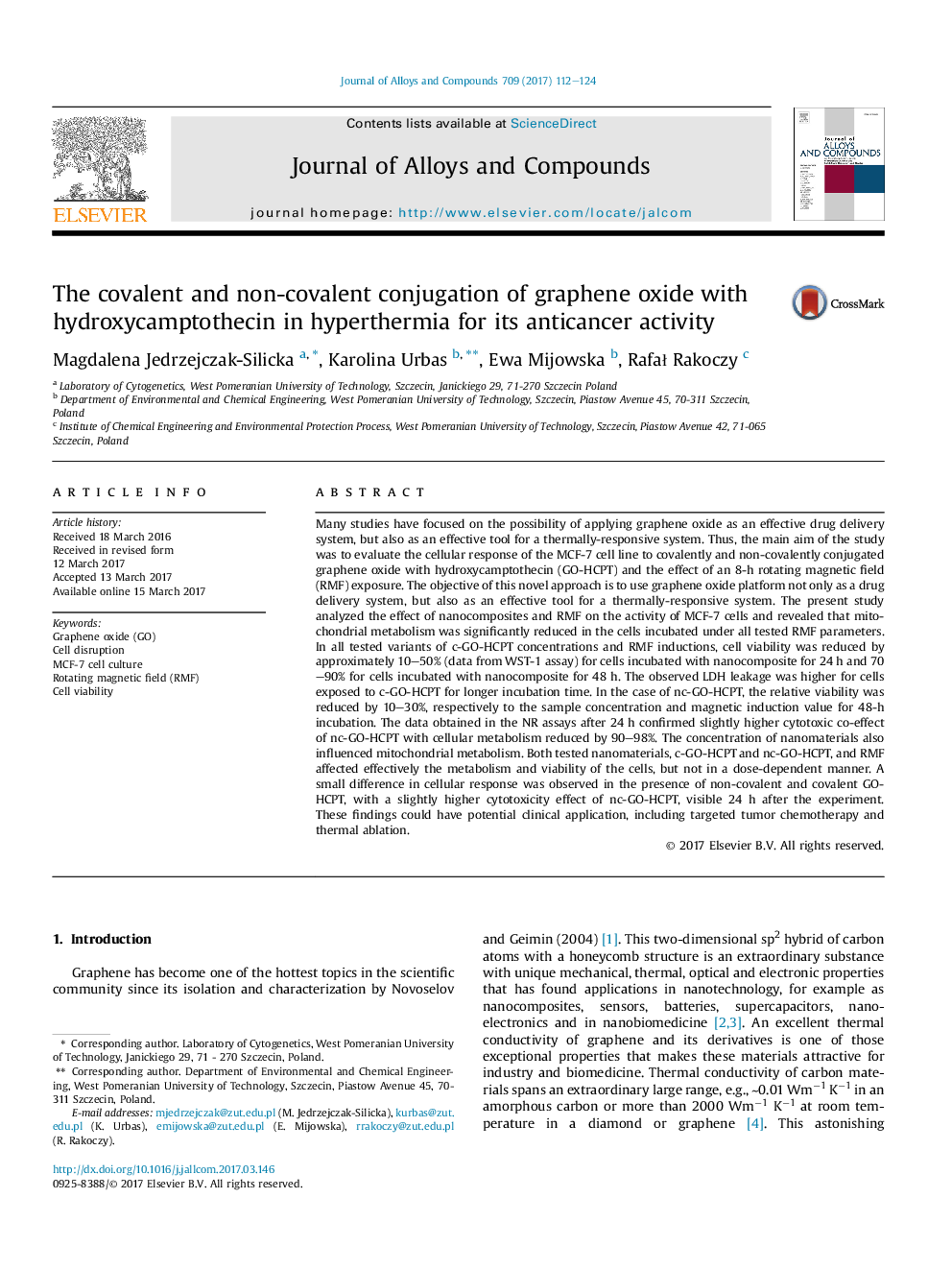| Article ID | Journal | Published Year | Pages | File Type |
|---|---|---|---|---|
| 5459599 | Journal of Alloys and Compounds | 2017 | 13 Pages |
Abstract
Many studies have focused on the possibility of applying graphene oxide as an effective drug delivery system, but also as an effective tool for a thermally-responsive system. Thus, the main aim of the study was to evaluate the cellular response of the MCF-7Â cell line to covalently and non-covalently conjugated graphene oxide with hydroxycamptothecin (GO-HCPT) and the effect of an 8-h rotating magnetic field (RMF) exposure. The objective of this novel approach is to use graphene oxide platform not only as a drug delivery system, but also as an effective tool for a thermally-responsive system. The present study analyzed the effect of nanocomposites and RMF on the activity of MCF-7Â cells and revealed that mitochondrial metabolism was significantly reduced in the cells incubated under all tested RMF parameters. In all tested variants of c-GO-HCPT concentrations and RMF inductions, cell viability was reduced by approximately 10-50% (data from WST-1 assay) for cells incubated with nanocomposite for 24Â h and 70-90% for cells incubated with nanocomposite for 48Â h. The observed LDH leakage was higher for cells exposed to c-GO-HCPT for longer incubation time. In the case of nc-GO-HCPT, the relative viability was reduced by 10-30%, respectively to the sample concentration and magnetic induction value for 48-h incubation. The data obtained in the NR assays after 24Â h confirmed slightly higher cytotoxic co-effect of nc-GO-HCPT with cellular metabolism reduced by 90-98%. The concentration of nanomaterials also influenced mitochondrial metabolism. Both tested nanomaterials, c-GO-HCPT and nc-GO-HCPT, and RMF affected effectively the metabolism and viability of the cells, but not in a dose-dependent manner. A small difference in cellular response was observed in the presence of non-covalent and covalent GO-HCPT, with a slightly higher cytotoxicity effect of nc-GO-HCPT, visible 24Â h after the experiment. These findings could have potential clinical application, including targeted tumor chemotherapy and thermal ablation.
Related Topics
Physical Sciences and Engineering
Materials Science
Metals and Alloys
Authors
Magdalena Jedrzejczak-Silicka, Karolina Urbas, Ewa Mijowska, RafaÅ Rakoczy,
